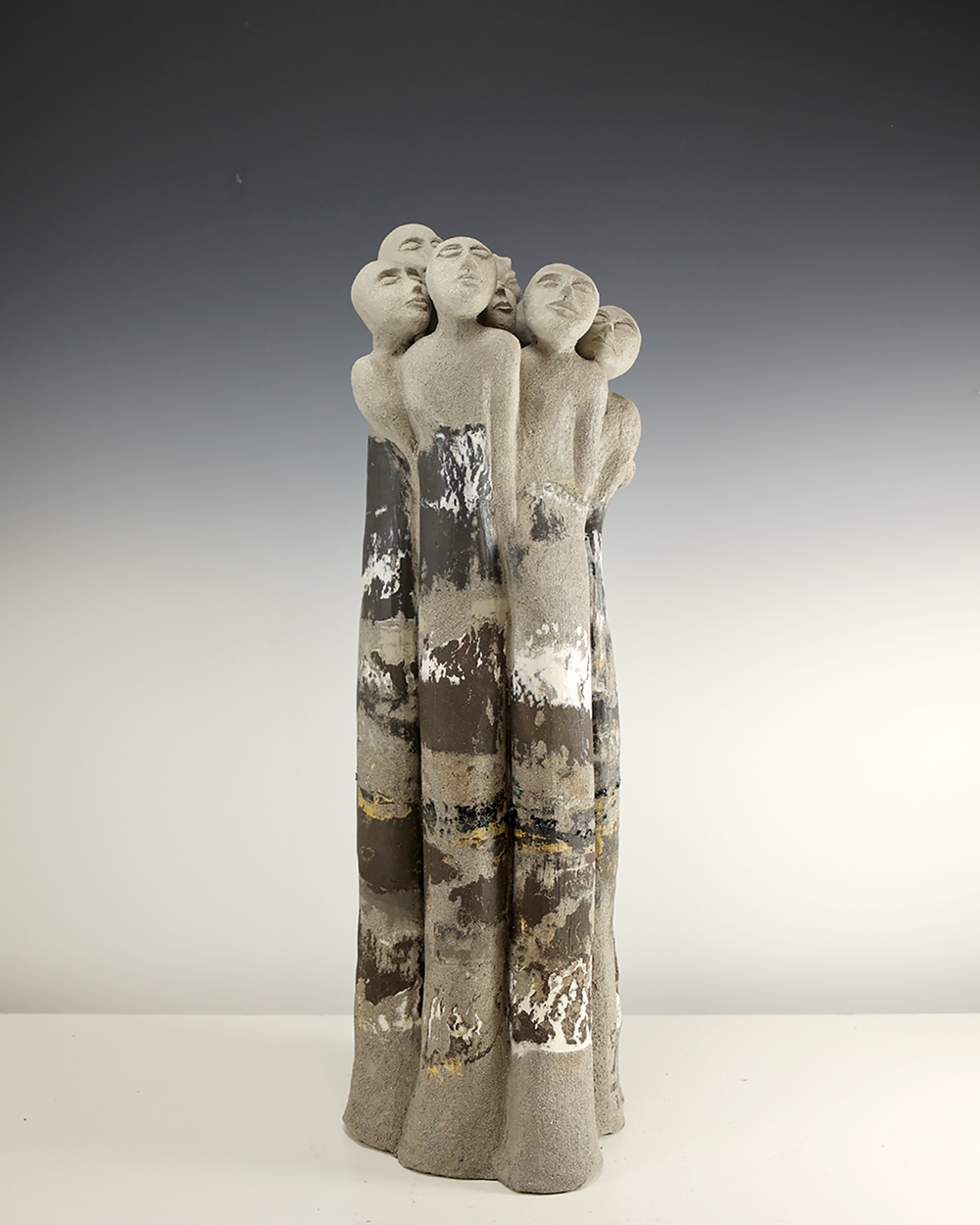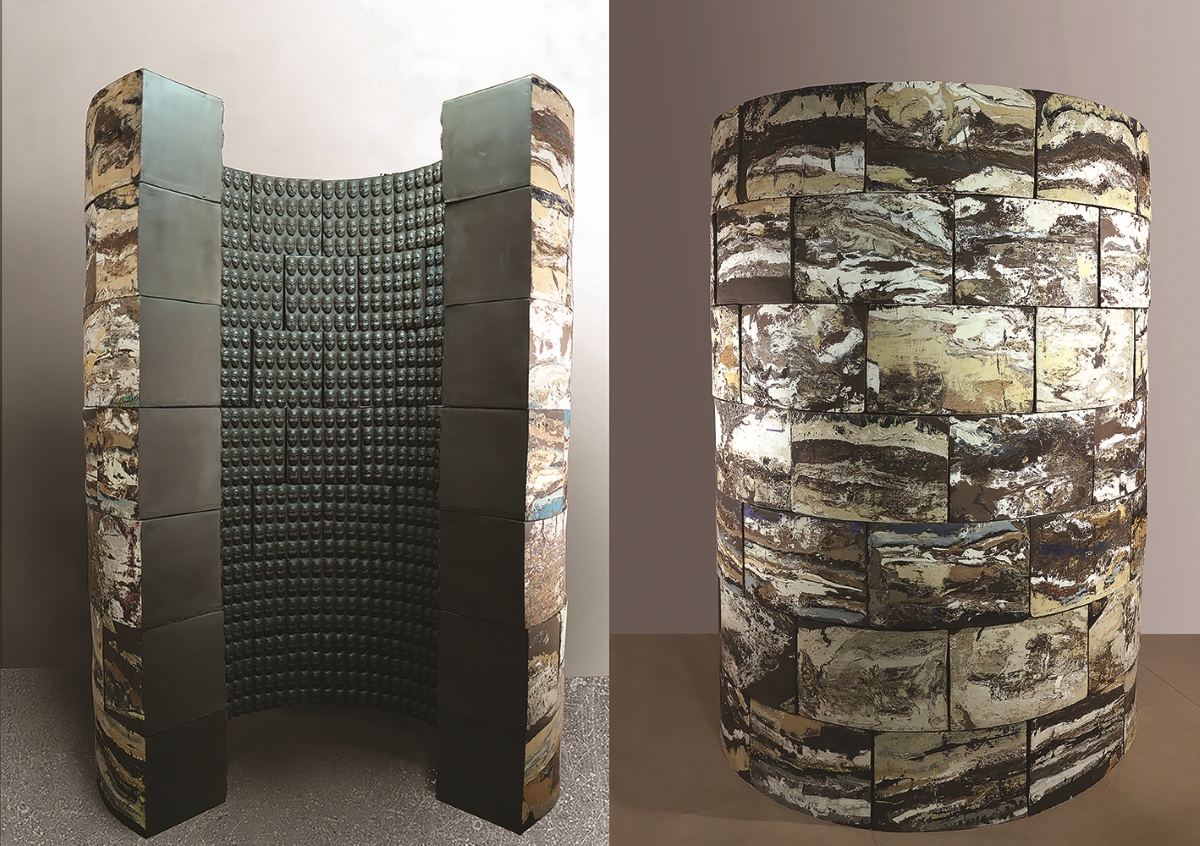Born in Canada in 1957, Claudia von Boch discovered ceramics in Argentina, where she lived for 23 years. Her first contact with this material was when she visited the studio of an Argentinian ceramicist: “I was only ten years old, but immediately, a connection and love for this media was established. My family has been in the industrial manufacture of ceramics (Villeroy & Boch) for over eight generations. This was also decisive in influencing my choice for clay and hereafter becoming my most faithful companion.
Throughout my youth, I followed ceramic courses in various studios. Self-taught, I later continued to develop my modeling, wheel throwing, and technology skills through courses, workshops and apprenticeships with Argentinean ceramicists (Guillermo Mané and Jorge Basile). This led the way to my first studio, and while my family grew with the arrival of three children, I pursued my work with clay. In 1990, I moved to Lausanne, Switzerland, with my family, dog, and all—this was when ceramics took a real professional turn for me.
A year at Céruleum, School of Visual Arts in Lausanne (1994-95) was followed by four years of ceramics at the School of Visual Arts in Vevey (1995-99) under the direction of ceramicist Jacques Kauffman. In 1999, with a diploma in ceramics, I inaugurated the Atelier Gaïa in Pully, the Mother Earth of the Greeks, alluding to the earth from which we come and use as ceramicists.
For the next 25 years, I shared my time between my work (sculptural and non-functional objects) and the transmission of ceramics through teaching to adults and children. I have exhibited my work in galleries, salons, museums, and competitions in Switzerland, France, Germany, Italy, Luxembourg, Canada, the USA, the Dominican Republic, and Croatia. Although today I still occasionally hold workshops (raku, mold casting, Kintsugi), in 2018, I stopped teaching and transferred my studio to Orcesco, a picturesque little village in Piemonte, Italy. In this inspiring area surrounded by mountains, I spend a good part of the year and continue my personal work.
Over the years, I have continued with further training: mold casting (Sasha Wardell, Emery-Jacquier, Jean François Lemaire) – paper-clay (Barbara Wagner) – porcelain (Jingdezhen, China) – calligraphy (Claire Mosnier, Denise Lach). These techniques have been integrated into my work and increased my freedom to express my ideas.”
Visit Claudia von Boch’s website and Instagram page.
Featured work
Selected works, 2018-2023


Over billions of years, geology has transformed our planet through erosion, sedimentation, pressure and heat. Today, we study and understand (to a certain extent!) the evolution, accumulation, and transformation of the living matter (bacteria, plants, animals) and the mineral matter composing the geological strata. It tells the story of our Earth that reads like a book.
Using this as a source of inspiration, my work in general, whether sculptural or one-of-a-kind objects, replicates the phenomena of stratification. In a shortened order of time concerning nature, my ceramics manifest the same erosion, sedimentation, pressure and heat occurrences. Within this process, kiln firing represents a partially controlled hazard resulting in surprising fusions, deformations, colors, flows, fissures and textures. These could be considered in the ceramic world as defects, but for me, they are acceptable as part of the work, as well as they are part of the rocks, minerals and mountains.
Thus, after over 25 years of working and teaching in my studio, leftover clays, stoneware, porcelain, colored engobes, glazes, and even cleaning-up water have been recovered and accumulated in layers. It was also the way I found to recycle and reuse waste materials ecologically. Similarly to geological formations, these stratified clays also tell a story… it’s the story of my work and my students passing through my studio. Each piece contains a little of us all. Like a skin, the stages of life and time are conserved within the strata. Layer upon layer, humans are built… each layer added to an older one… each having an incidence on the whole being delicately and intimately linked to the terrestrial world, to the world of Gaia.















